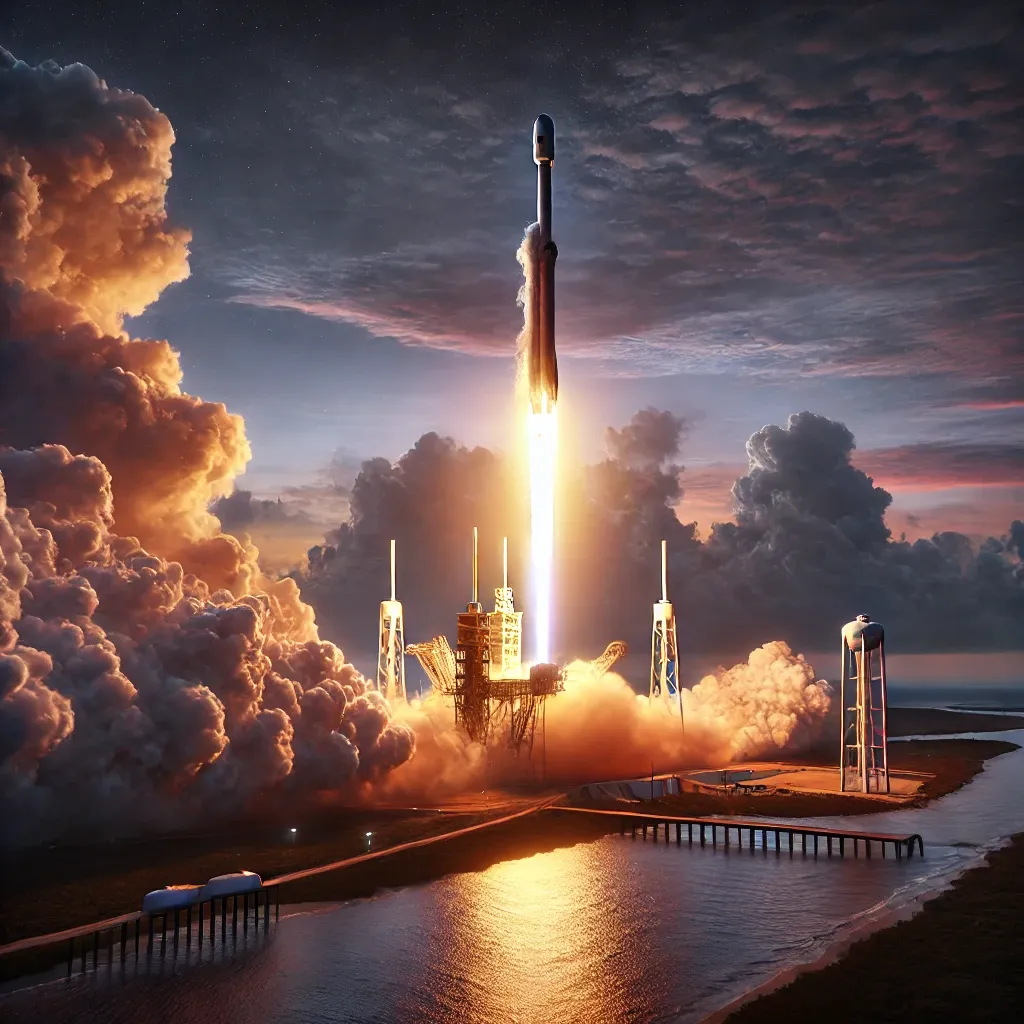What makes SpaceX launches so transformative? From record-breaking private missions to cutting-edge tech, SpaceX launches inspire the next generation of space explorers.
SpaceX Launches Falcon 9 Rocket: An Engineering Triumph
SpaceX’s Falcon 9 rocket is a marvel of modern engineering, designed to carry payloads ranging from satellites to crewed missions. Its reusable design revolutionized the space industry, driving down costs while boosting access to low Earth orbit (LEO). With precision landings of its boosters, the Falcon 9 demonstrates SpaceX’s mastery in reusable technology, setting it apart from competitors. Each launch represents a step toward achieving more ambitious space goals.
- Falcon 9 is capable of carrying over 22,800 kilograms to LEO.
- The rocket’s booster can return to Earth and land on drone ships like “Of Course I Still Love You.”
- It has supported NASA, military, and commercial missions.
- With over 200 launches, Falcon 9 holds the record for the most successful consecutive flights.
- It serves as the primary vehicle for deploying Starlink satellites, which aim to provide global internet coverage.
Falcon 9’s relentless success underscores how innovation in reusable technology is reshaping space travel. This game-changing model has expanded humanity’s ability to explore beyond Earth.
SpaceX Launches Billionaire’s Private Crew for Spacewalk Mission
In a groundbreaking mission, SpaceX made headlines by launching a billionaire-funded crew for a private spacewalk. This unprecedented flight showcased the shift toward private space exploration, driven by ambitious individuals and backed by technological advances. The private mission was part of the broader goal to democratize access to space.
- Jared Isaacman, founder of Shift4 Payments, led the crew in this historic mission.
- This mission aimed to push boundaries, including an EVA (Extravehicular Activity) at 500 km altitude—higher than the International Space Station.
- All members underwent intensive training to prepare for non-professional astronaut roles.
- This private endeavor was aligned with SpaceX’s goal of commercializing human spaceflight, paving the way for future private missions to Mars.
Private missions like this foster collaboration between public institutions and private enterprises, ensuring the dream of space travel is no longer limited to governmental organizations.
SpaceX Launches Starship: The Future of Interplanetary Travel
Starship, SpaceX’s next-generation rocket, is designed to make interplanetary travel a reality. Unlike Falcon 9, Starship is fully reusable, with both the upper stage and booster capable of landing and relaunching. As the centerpiece of SpaceX’s vision, Starship is planned to support missions to the Moon, Mars, and beyond.
- It stands 120 meters tall, making it the largest rocket ever built.
- Starship is designed to carry 100 tons of cargo and crew per flight.
- Artemis missions plan to use Starship to land astronauts on the Moon.
- The vehicle aims to create self-sustaining colonies on Mars by 2050.
- SpaceX envisions Starship conducting point-to-point travel on Earth, reducing long flights to under an hour.
The development of Starship reflects SpaceX’s bold ambition to not only expand humanity’s presence in space but also create a multiplanetary civilization.
Conclusion
SpaceX continues to set new standards with each launch. Whether through the reusable Falcon 9, private spacewalk missions, or the revolutionary Starship, the company remains at the forefront of innovation. Elon Musk’s vision to make humanity an interplanetary species is closer than ever, inspiring millions around the world. As Neil Armstrong once said, “That’s one small step for man, one giant leap for mankind.” SpaceX ensures those steps are faster, bolder, and more achievable with every mission.






